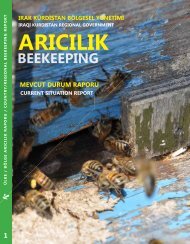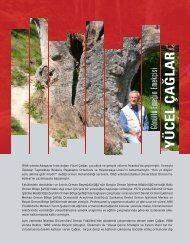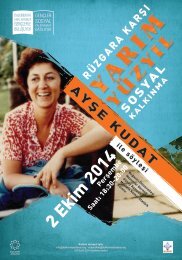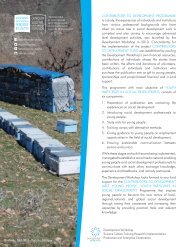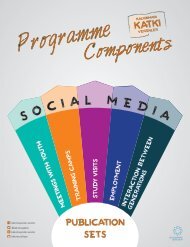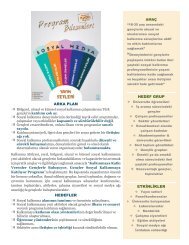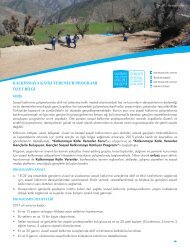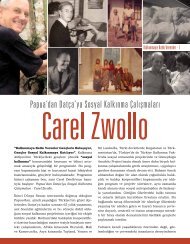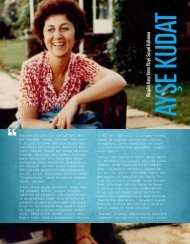You also want an ePaper? Increase the reach of your titles
YUMPU automatically turns print PDFs into web optimized ePapers that Google loves.
The study conducted by Gülçubuk, Karabıyık and Tanır (2003) found that children working<br />
during the seasonal agricultural migration travelled to different regions within the country,<br />
were away from home for between three and seven months, and lived in plastic, unprotected<br />
tents without electricity or clean drinking and utility water. The children worked long<br />
hours in the fields alongside adults and were seiously affected by agricultural chemicals.<br />
Similar findings are reported by Özbek (2007) in a study conducted in the district of Karataş<br />
in Adana. The majority of the seasonal and migratory agricultural labour force is made up of<br />
persons who are not land owners. Gülçubuk (et al, 2003), however, found that the percentage<br />
of labourers who are not land owners was 30.2%. Özbek also pointed to the participation<br />
of the urban poor in seasonal agricultural migration. A similar situation is highlighted in<br />
the study conducted by Çetinkaya (2008).<br />
Another key finding of the research and studies which have been conducted is that the seasonal<br />
agricultural labour force migrates from the East and South-eastern Anatolian regions<br />
(Gülçubuk et al, 2003; Karabulut, 2008; Özbek 2007; Yıldırak et al, 2002). What is new is<br />
that the landless groups are made up of persons who have previously emigrated from the<br />
rural areas to the urban areas, and that these persons participate in seasonal agricultural<br />
migration (Çetinkaya, 2008). in other words, poor urban dwellers migrate temporarily to<br />
rural areas in order to earn a living. This finding shows that poverty is becoming further<br />
ingrained and is reflected in the situation where those migrating from rural areas to urban<br />
areas do not have the “skills” to find employment in their urban settlement.<br />
As mentioned above, the majority of households participating in seasonal agricultural migration<br />
come from the East and South-eastern Anatolian regions. These households include<br />
citizens of Turkey of Kurdish and Arab ethnic background who were made to vacate their<br />
villages as of the 1990s due to the political unrest in the region (Kurban, 2007; Yükseker,<br />
2006). More than 900 villages and 2,500 hamlets were vacated in that period and although<br />
the exact numbers are not known, it is estimated that the situation affected close to a million<br />
people (Yükseker, 2006).<br />
According to Karabulut (2008), it is this forced migration which underlies the use of child<br />
labour in seasonal agricultural migration. Before they were forced to migrate, the main<br />
source of income for the villagers was agriculture and animal husbandry (Yükseker, 2006).<br />
Villagers survived on subsistence agriculture until they were suddenly forced to migrate<br />
from their villages without any opportunity to make preparations. Many were not able to<br />
sell their land or livestock and were forced to leave their villages without the opportunity<br />
to transfer their capital savings to other economic activities (Karabulut 2008). According<br />
to Yükseker, these groups were forced to settle in the disadvantaged neighbourhoods of<br />
urban areas, bringing with them economic difficulties and violations of their social citizenship,<br />
leading to their social exclusion in these urban areas (Yükseker, 2006).<br />
However, participation in seasonal agricultural migration is not only a consequence of<br />
forced migration. Historically, this type of labour has been practised for many hundreds of<br />
23




